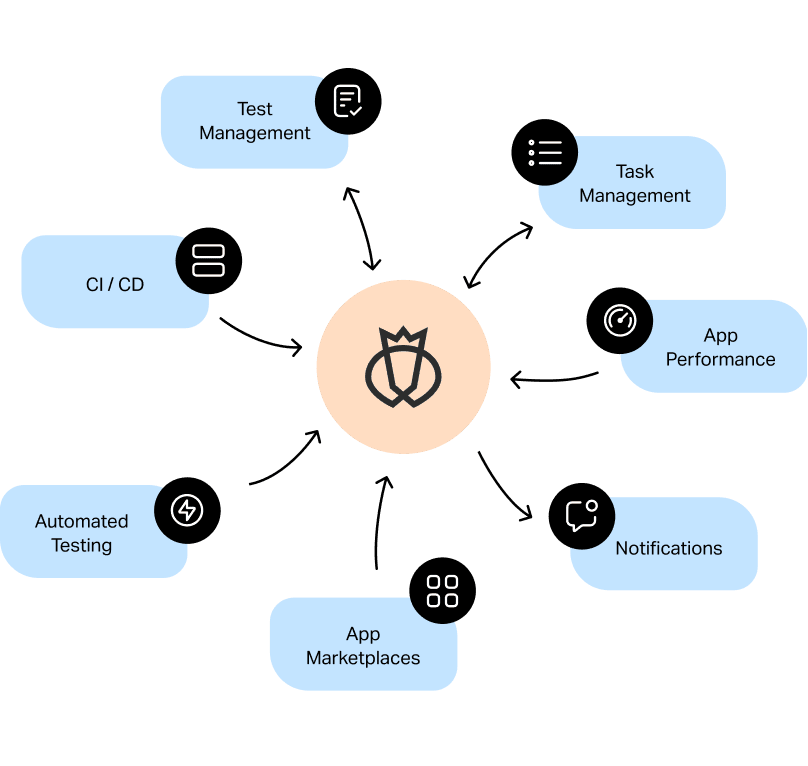Automation Testing Approaches: Finest Practices for Seamless Integration
Automation Testing Approaches: Finest Practices for Seamless Integration
Blog Article
Making Sure Success in Automation Examining: Trick Metrics, Obstacles, and Solutions Every QA Group Must Know
In the world of software program high quality assurance, the landscape of automation testing is ever-evolving, demanding a precise approach to make sure smooth operations. Key metrics act as the compass assisting QA groups via the large terrain of test automation, shedding light on development and areas for improvement. Nevertheless, obstacles impend large, commonly casting shadows on the course to success. By understanding these hurdles and carrying out efficient solutions, QA teams can navigate with intricacies with skill. The trip to understanding automation testing is led with subtleties that call for an eager eye for surveillance, evaluation, and continual renovation. automation testing. As the market thrusts forward, the quest for ideal performance in automation testing continues to be a constant pursuit, urging QA teams to equip themselves with the knowledge and strategies vital for triumph.
Significance of Key Metrics
Understanding the significance of essential metrics is important for evaluating the efficiency and efficiency of automation screening processes. Key metrics serve as quantifiable procedures that offer valuable understandings into numerous elements of the testing procedure, such as test coverage, examination execution time, flaw density, and test case effectiveness. By analyzing these metrics, QA groups can identify traffic jams, inefficiencies, and locations for improvement within their automation screening framework.
One critical element of vital metrics is their capability to track progression and keep track of the general health of the screening procedure (automation testing). They enable stakeholders to make educated choices based on data-driven understandings, which can cause more effective screening strategies and much better source allotment. Furthermore, key metrics can assist groups established reasonable objectives, gauge the success of automation initiatives, and show the ROI of automation testing efforts

Usual Obstacles Encountered
Obstacles frequently run into in automation testing processes can dramatically influence the general efficiency and performance of QA teams. Among the major obstacles is the choice of the best examination situations for automation. Not all examination situations appropriate for automation, and choosing the wrong ones can cause lost time and sources. Furthermore, maintaining test scripts can be an overwhelming task, specifically as the application undertakes constant changes. Examination script maintenance needs constant updates and modifications to ensure they show the current performance precisely. An additional typical obstacle is the initial financial investment needed for setting up automation frameworks and devices. This can be a barrier for some organizations, specifically smaller sized ones with restricted budget plans. Automation testing might not cover all aspects of testing, such as functionality and customer experience testing, which still require hands-on treatment. Getting rid of these obstacles requires appropriate preparation, tactical examination instance selection, durable upkeep processes, sufficient resources, and a clear understanding of the restrictions of automation screening.
Efficient Solutions for Obstacles
To resolve the challenges come across in automation testing, implementing reliable options is crucial for improving the effectiveness and productivity of QA groups. One essential solution is to buy robust training programs for QA groups to ensure they have the necessary abilities to successfully utilize automation devices. Training can connect knowledge voids, improve understanding of automation frameworks, and improve scripting capabilities, inevitably causing much more efficient examination development and execution.
Another essential option is to establish clear interaction channels within the QA group and with other stakeholders, such as designers and project supervisors. Effective interaction helps in straightening expectations, sharing progression updates, and quickly resolving problems or roadblocks that may arise throughout the automation screening process.

Monitoring and Evaluation Strategies
Implementing efficient surveillance and analysis strategies is important for ensuring the success and effectiveness of automation screening processes. Furthermore, examining examination results and metrics gives valuable insights right into the top quality of the software being checked and the performance of the screening strategy.
One key method in surveillance and analysis is the use of control panels that settle pertinent metrics and KPIs in a visually obtainable format. These dashboards use a thorough overview of test implementation condition, examination insurance coverage, problem patterns, and various other critical information. On a regular basis assessing and assessing these control panels can assist QA groups make notified choices, focus on jobs, and enhance testing efforts.
Moreover, applying automated alerts and notices based on predefined thresholds can enhance positive surveillance and prompt treatment. By setting up notifies for performance variances or test failures, teams can address issues quickly and prevent them from escalating. Generally, tracking and analysis techniques play a vital role in ensuring the performance and success of automation screening campaigns.
Constant Enhancement Approaches
Enhancing the efficiency of automation testing processes demands the regular refinement of techniques and techniques. Constant improvement strategies are crucial for QA groups to adapt to evolving modern technologies and provide top notch software program items. One essential strategy to improving automation testing procedures is to carry out regular evaluations from this source and retrospectives. By evaluating previous testing cycles, groups can determine traffic jams, inadequacies, and areas for improvement. Executing responses loopholes and including lessons learned right into future testing structures can yield considerable improvements gradually.

Verdict
Finally, it is essential for QA groups to understand the vital metrics, difficulties, and services in automation testing to make sure success. By thoroughly monitoring and examining data, carrying out effective options to common difficulties, and continuously boosting techniques, QA groups can optimize their testing procedures and deliver high-grade software application items. Following these techniques will ultimately cause more effective and effective automation screening practices.
By evaluating these metrics, QA teams can recognize traffic jams, ineffectiveness, and areas for enhancement within their automation screening structure.
In addition, essential metrics can assist teams set sensible objectives, measure the success of automation efforts, and show the ROI of automation screening efforts.
Challenges frequently run into in automation screening procedures can considerably impact the general performance and performance of QA groups. Automation screening might not cover all aspects of testing, such as usability and user experience testing, which still require manual intervention.In final thought, it is vital for QA groups to comprehend the crucial metrics, obstacles, and remedies in automation screening to make sure success.
Report this page